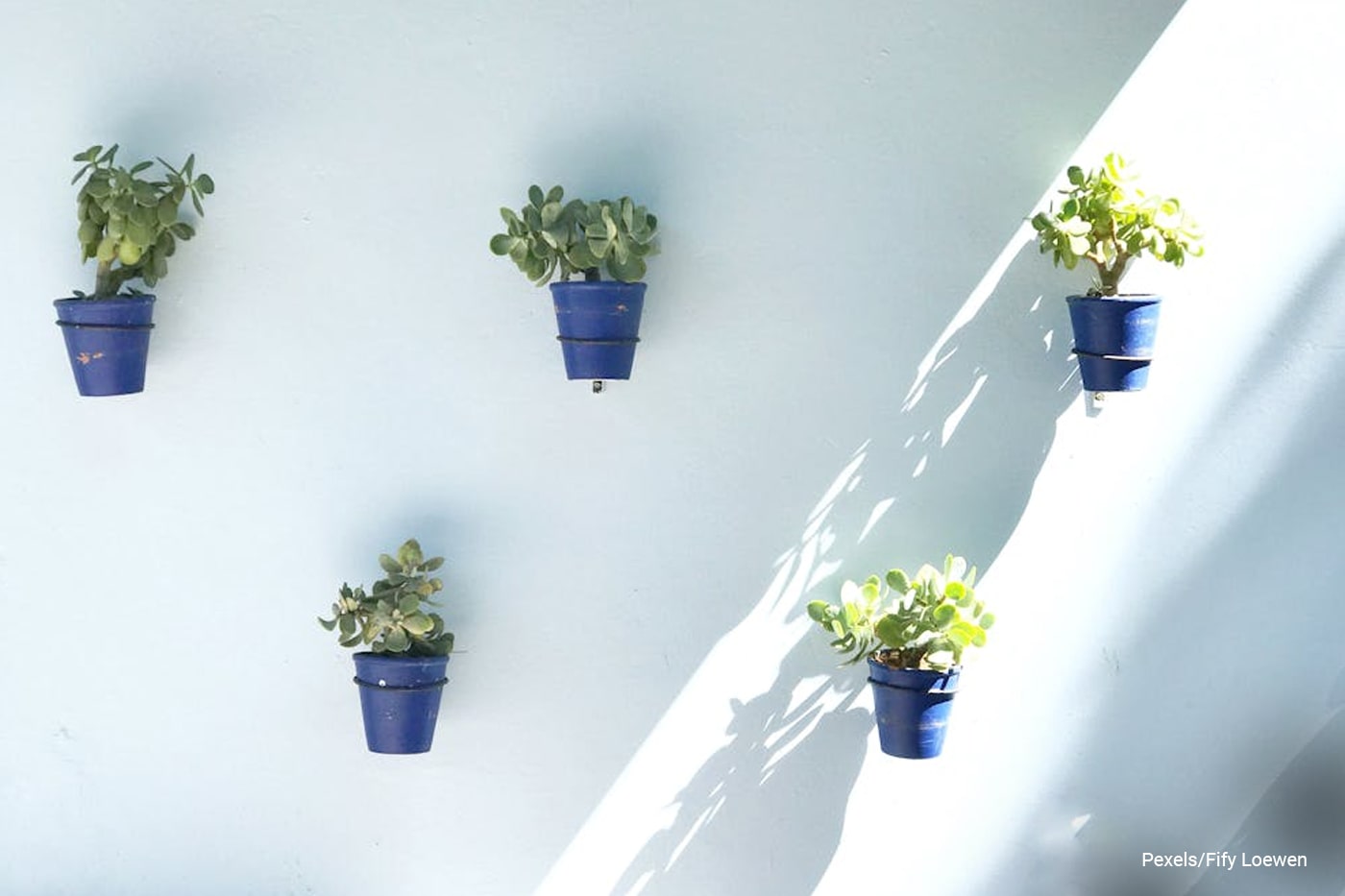If you love greenery but lack space, a vertical garden might be the perfect solution. Whether you live in an apartment, a condo, or a small home, growing plants on your wall can transform even the tiniest area into a lush, thriving garden. In this guide, we’ll share the best vertical garden hacks to help you grow more plants in less space – and do it beautifully.
Contents []
What Is a Vertical Garden?
Benefits of a Vertical Garden
-
1. Choose the Right Wall and Light
2. Use Vertical Planters and Hanging Pots
3. Install a Simple Irrigation System
4. Choose the Right Plants for Vertical Growth
5. Add Fertile, Well-Draining Soil
6. Maintain Regular Pruning and Rotation
7. Upcycle and DIY Vertical Garden Ideas
8. Keep Pests and Mold Under Control
9. Incorporate Decorative Elements
10. Start Small and Expand Gradually
Small Space Gardening
What Is a Vertical Garden?

A vertical garden (also called a living wall or green wall) is a way of growing plants upward instead of outward. Instead of using horizontal planters or pots on the ground, plants are arranged on walls, fences, or structures that allow them to grow vertically.
These gardens are perfect for urban gardening, balcony gardens, or small backyard spaces, offering both beauty and functionality.
Benefits of a Vertical Garden
Before jumping into the hacks, here’s why vertical gardening is such a smart idea:
- Maximizes small spaces – perfect for apartments or balconies.
- Improves air quality by absorbing carbon dioxide and releasing oxygen.
- Reduces water waste through efficient drip irrigation systems.
- Adds natural beauty and greenery to walls, fences, and patios.
- Lets you grow fresh herbs and vegetables even without a yard.
1. Choose the Right Wall and Light

The first step in building your vertical garden is picking the right spot.
- South-facing walls get the most sunlight, perfect for sun-loving herbs and veggies like basil, thyme, or cherry tomatoes.
- North-facing or shaded walls work better for low-light plants like ferns, lettuce, and spinach.
Pro Tip: Use a reflective surface or light-colored wall to bounce sunlight and help your plants grow evenly.
2. Use Vertical Planters and Hanging Pots
One of the easiest vertical garden hacks is using modular planters, pocket planters, or hanging pots.
- Felt or fabric pocket planters are lightweight and great for herbs.
- Stackable planters or tiered shelves let you grow more plants with minimal effort.
- For a rustic touch, repurpose wooden pallets into vertical planters by adding soil pockets and mounting them on a wall.
3. Install a Simple Irrigation System
Keeping your vertical garden hydrated can be tricky if you water by hand. A drip irrigation system or self-watering planters ensures consistent moisture without overwatering.
Hack: Insert a slow-release water bottle upside down into the soil. It’s a DIY watering system that works perfectly for small setups!
4. Choose the Right Plants for Vertical Growth

Not all plants thrive in vertical gardens. Choose compact, lightweight, and fast-growing plants that don’t need deep soil.
Best plants for vertical gardens:
- Herbs: Basil, parsley, mint, thyme, oregano
- Leafy greens: Spinach, lettuce, kale
- Flowers: Petunias, marigolds, begonias
- Vines: Ivy, pothos, philodendron, strawberries
Mix different types for color, texture, and fragrance – your wall will become both productive and stunning.
5. Add Fertile, Well-Draining Soil
Because vertical gardens use limited soil, nutrients can deplete quickly. Use lightweight potting mix rich in organic compost and perlite for proper drainage.
Hack: Add a thin layer of coco coir to retain moisture while keeping roots aerated.
6. Maintain Regular Pruning and Rotation
To keep your wall garden thriving, prune regularly to prevent overcrowding. Rotate or swap plants every few weeks to ensure they all receive enough light.
Hack: Trim herbs often—this encourages new growth and prevents them from getting leggy.
7. Upcycle and DIY Vertical Garden Ideas
You don’t need to buy expensive planters! Here are some creative DIY vertical garden hacks:
- Repurpose old shoe organizers as hanging herb gardens.
- Use plastic bottles cut in half and stacked with strings.
- Hang wire grids or trellises and attach small pots using hooks or cable ties.
- Turn old ladders or wooden crates into multi-level planters.
Not only are these eco-friendly, but they also add a unique personality to your green space.
8. Keep Pests and Mold Under Control
Because vertical gardens are close together, moisture can attract mold and pests.
- Ensure good air circulation around your plants.
- Use natural pest repellents like neem oil or garlic spray.
- Avoid overwatering, moisture buildup is the main cause of fungal problems.
9. Incorporate Decorative Elements
A vertical garden isn’t just functional, it’s art! Combine greenery with design elements:
- Use colorful pots or geometric arrangements.
- Add fairy lights for a cozy evening glow.
- Include herb labels or mini chalkboard tags for a personal touch.
10. Start Small and Expand Gradually
You don’t need to cover your entire wall immediately. Start with a few easy-to-grow plants, test how they adapt to your wall conditions, and expand as you gain experience. Vertical gardening is all about experimentation and creativity!
Small Space Gardening

A vertical garden is more than just a space-saving trick. It’s a lifestyle choice that brings freshness, beauty, and sustainability into your home. With these vertical garden hacks, you can transform any blank wall into a thriving green masterpiece full of herbs, greens, and flowers.
Whether you live in a high-rise apartment or a small home, your walls can now grow life, literally!



